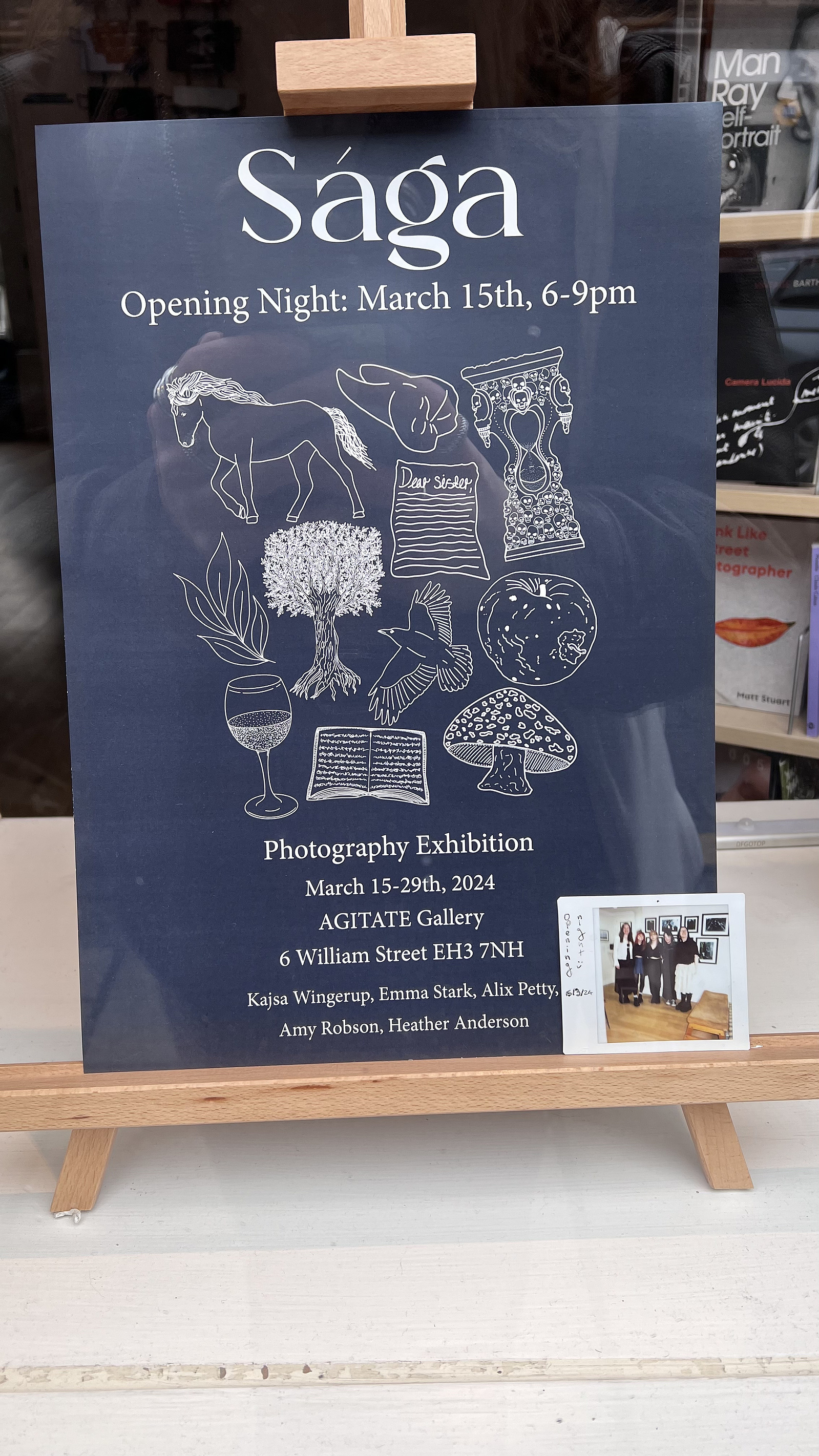I wanted to delve deeper into the rich history of my home county, Northumberland. I knew of the basic history of the land and wondered how this has impacted the landscape we see today. I then researched the folktales that have been passed through the generations, reading Malcolm Green's 'Northumberland Folk Tales'. Using some of these stories as inspiration, I wanted to tell this story through the medium of photography.
Silkie of Black Heddon
Silkie of Black Heddon got her name from the black silks she wore that rustled as she roamed. She was often seen flitting amongst the trees and roaming through the waterways of the land, conjuring up mischief and misery as she went. Silkie was often linked to death, people believing that she may have been a foretelling of death or maybe even the cause. She was often seen in people’s nightmares, an unquiet soul who manifested in people’s most visionary time, sleep.
It was also hypothesised that Silkie may have been a descendant of the ancient Celtic deity, Dea Latis, a goddess who was associated with waterways of Northern England.
Who was Silkie of Black Heddon?
What was her purpose?
Why was she connected with death?
Where did she go?
Or did she ever leave?
Text via ‘Northumberland Folk Tales’ by Malcom Green, appropriated by Alix Petty


Queen Mab's Hill
One afternoon a woman was walking around Fawdon Hill when she heard silvery music coming from somewhere inside the hill. She walked cautiously toward the sound, to find a door opening in the hill. She peered through it to see the most extraordinary of gifts. There was a fairy court having a lavish banquet. A table groaned with food and wine whilst Queen Mab sat in all of her finery at one end with her counsellors seated around her. Musicians held court with their flutes and fiddles. The woman was literally spellbound, staring into this otherworld, when one of the fairies walked out of the hill towards her and offered her a drink in a silver goblet. Alarm bells rang inside her head. ‘Drink from a fairy cup and you will never be able to leave their world’. She threw it to the ground and ran off at great speed. She never did see them again or know what it would be like to enter the fairy world.
Text via ‘Northumberland Folk Tales’ by Malcom Green, appropriated by Alix Petty
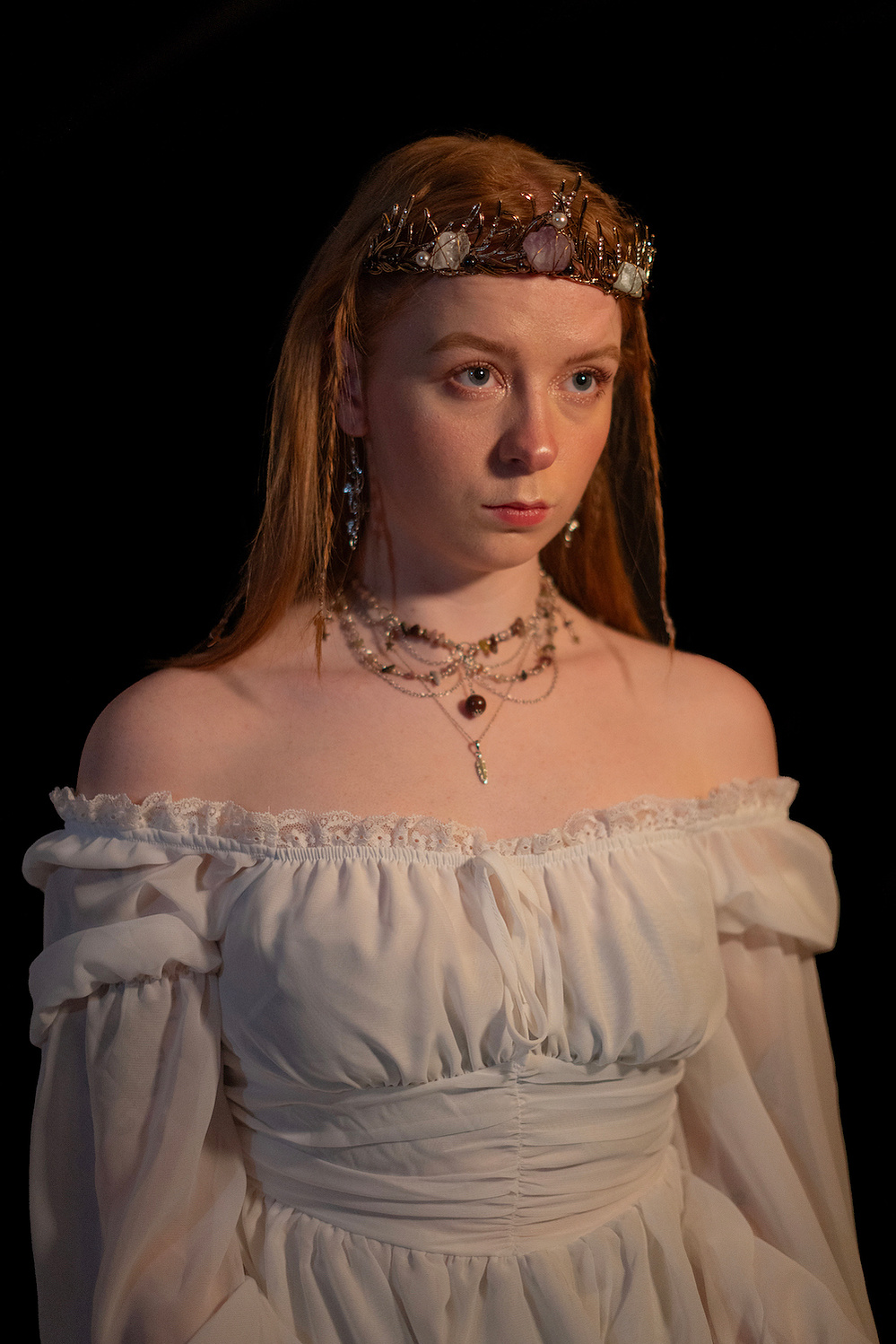
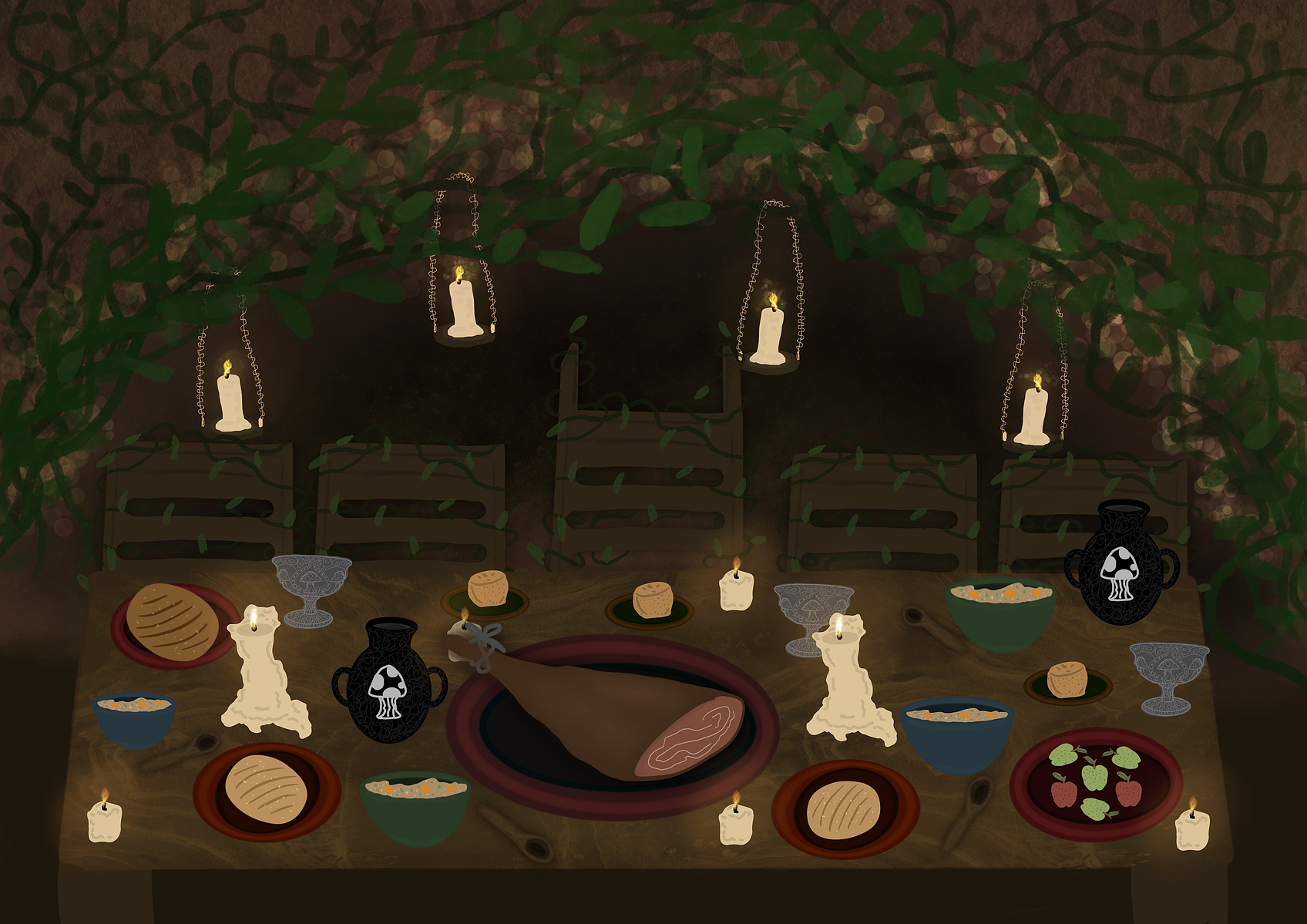
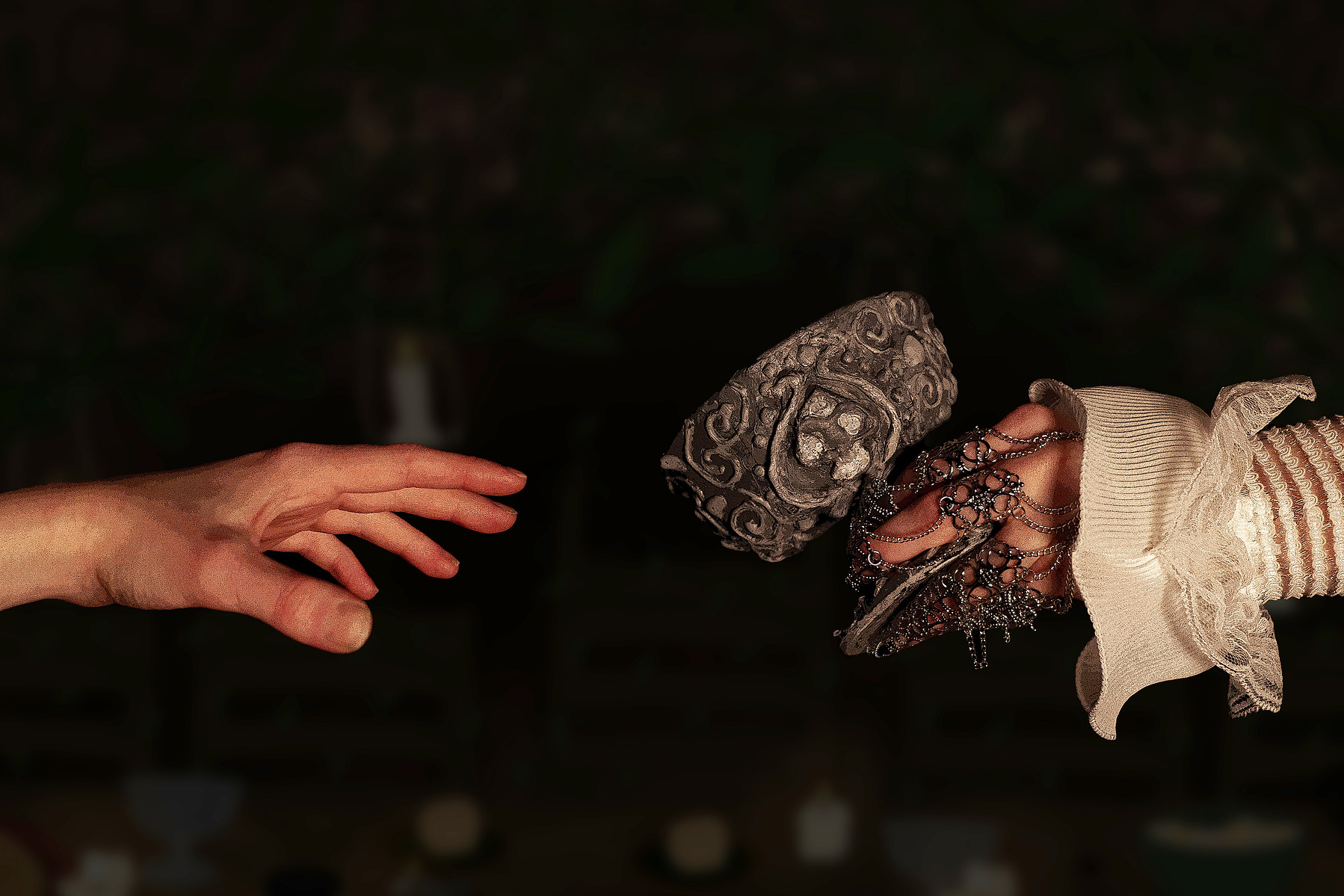
Nelly the Knocker
In the middle of a farmers’ field in rural Northumberland, there was a large standing stone that had been there since the Bronze Age. A soft knocking could be heard coming from this stone. Everyone knew that it could only be one thing. Nelly the Knocker, standing tapping away at the stone with a pebble. Those who saw her said she always had the same demeanour, wearing the same black dress and black headscarf, she became a staple and a comfort to the locals and especially to the farmer. People often pondered on what could be so special about this stone and what Nelly was doing, but they never dared to investigate.
This was all until one day when two siblings who had just moved the nearby village, watched on as Nelly tapped away at the stone. They grew very inquisitive and yearned to know what the stone could be hiding. After a long day of tapping away Nelly disappeared for a while as she always did and this became the perfect opportunity for the siblings to strike. They set up an explosive and blew up the stone, creating a huge hole with debris everywhere. However, within that debris lay treasure, clay pots with ancient silver coins laying in them. The siblings were now rich with their stolen fortune and Nelly was never seen again.
Text via ‘Northumberland Folk Tales’ by Malcom Green, appropriated by Alix Petty
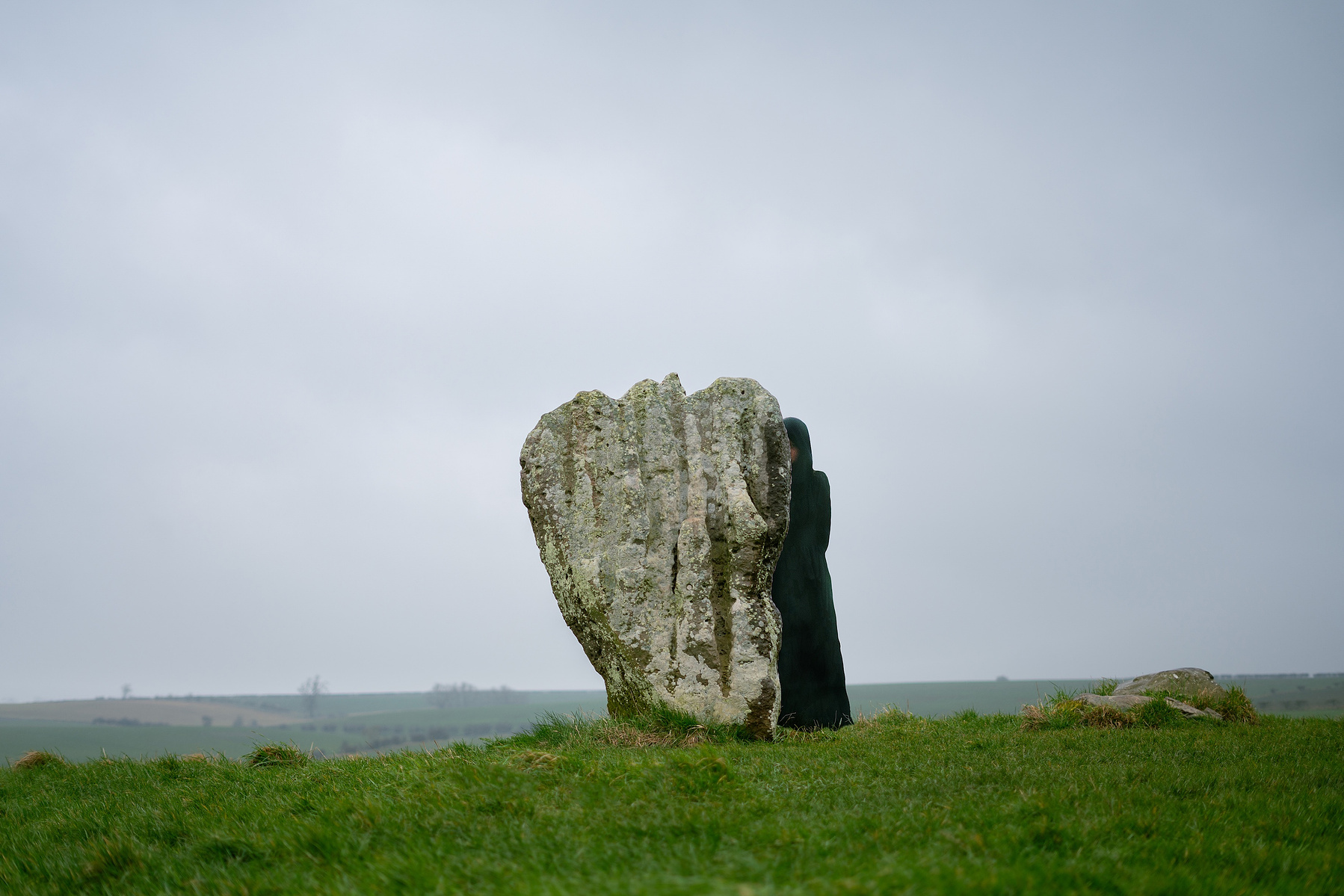

Exhibiting my Work
I had the opportunity to participate in a group exhibition alongside four talented photographers at AGITATE Gallery in Edinburgh. Our exhibition, 'Sága', delved into themes of family, folklore, women, and self-portraiture. This experience was incredibly rewarding. In addition to showcasing my work, I had the opportunity to design the exhibition poster.

